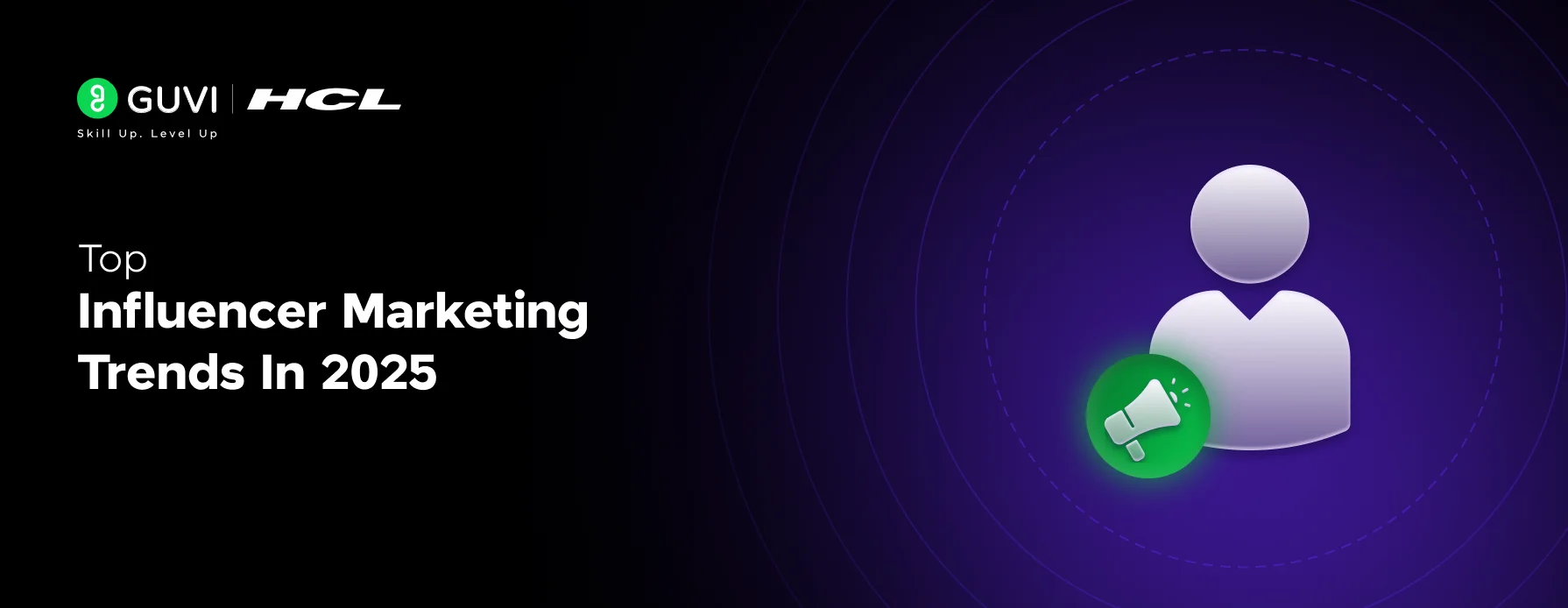
Top Influencer Marketing Trends in 2025
Jan 31, 2025 5 Min Read 3340 Views
(Last Updated)
It is estimated that the number of professional content creators around the world has already reached 50 million, and the economic value they generate exceeds $19 billion.
Moreover, the influencer marketing industry—which includes content creators, social media platforms, influencer marketing platforms, and other players in advertising, e-commerce, and sponsorship—is set to continue growing.
But where is influencer marketing heading in the short term?
Which Influencer Marketing trends can we expect to see shaping this industry in 2025?
Keeping up with these trends is the only way to stay ahead of the curve and gain the strategic competitive edge needed to stand out in an ever-crowded market.
With this in mind, we have done our research and put together some of the top trends that we expect to see in 2025. This guide will help you navigate the future of influencer marketing, exploring cutting-edge strategies, emerging technologies, and evolving consumer behaviors.
Table of contents
- The Rise of Gen Z
- Master Short Form Content: Storytelling in 60 Seconds or Less
- Live Shopping: The Next Frontier in Social Media Engagement
- Product Seeding as a Strategy for Market Entry
- Long-term Ambassadorships Over One-off Promotions
- Specialization and Professionalization of Influencers
- Diversification of Objectives and Full-Funnel Influencer Marketing
- Multi-Channel Influencer Marketing
- AI's Growing Impact
- Increased TikTok Growth ( Debatable )
- Focus on Return on Investment Over Engagement
- In Closing- Brands and Influencers must continue to evolve.
- FAQs
- How will influencer marketing trends in 2025 impact brand strategy?
- What are the benefits of long-term influencer partnerships compared to one-off promotions?
- Why is multi-channel marketing important in influencer campaigns?
1. The Rise of Gen Z
Gen Z is transforming influencer culture with authenticity, social activism, and creativity, making them the go-to choice for brands pursuing genuine audience connections in 2025.
- Authenticity: Gen Z influencers are known for being authentic to themselves. They don’t shy away from sharing their personal experiences and opinions, and this authenticity resonates with their followers who appreciate their honesty and relatability.
- Social Activism: Passionate about making the world a better place, these influencers use their platforms to speak out on important issues such as climate change, social justice, and mental health. This activism resonates with their peers who are looking for influencers who use their voices to make a difference.
- Creativity: Gen Z influencers are incredibly creative, constantly coming up with new and innovative ways to create content. This keeps their followers engaged and entertained and helps them stand out from the crowd.
Due to these reasons, Gen Z influencers will be a popular option for brands looking to create genuine connections with their followers in 2025.
As we proceed to the next section, consider getting started with GUVI’s Business Analytics and Digital Marketing Course with Placement Assistance, which lets you gain practical experience by developing real-world projects and covers technologies including Power BI, Excel, SQL, Tableau, Data Visualization, etc. for a thorough hold over the field.
ALSO READ: Top Content Writing Tools
2. Master Short Form Content: Storytelling in 60 Seconds or Less
We live in a world of near-zero attention spans, thus we can’t ignore the impact short videos have on the social landscape nowadays. Reels and short-form video content aren’t going away anytime soon.
Brands that want to harness their power in 2025 must create impactful content through storytelling, but it has to be concise. Here are a few tips for telling a compelling story in 60 seconds or less:
- Start with a Strong Hook: Use a compelling question, a surprising fact, or a funny anecdote. The first few seconds are crucial for grabbing viewers’ attention.
- Focus on a Single Message: Don’t try to cram too much information into your video.
- Use Visuals: High-quality video and images capture viewers’ attention and make your story more engaging.
- Keep it Moving: Short-form content is all about pacing. End with a call to action, telling viewers what you want them to do next.
Must Know Brand Storytelling in the Digital Age: Creating Compelling Content from Scratch
3. Live Shopping: The Next Frontier in Social Media Engagement
Remember when Kylie Jenner hosted a shoppable livestream on her website, showcasing her products as links to purchase them popped up on the screen, and the viewers ate up the whole inventory? Clicking a product in the stream directed users to a purchase page while the live stream continued.
Live shopping through social media is becoming a major trend, integrating e-commerce directly into social platforms. This approach not only enhances user engagement by offering real-time interaction but also significantly boosts conversion rates as viewers can purchase products in the moment of influence.
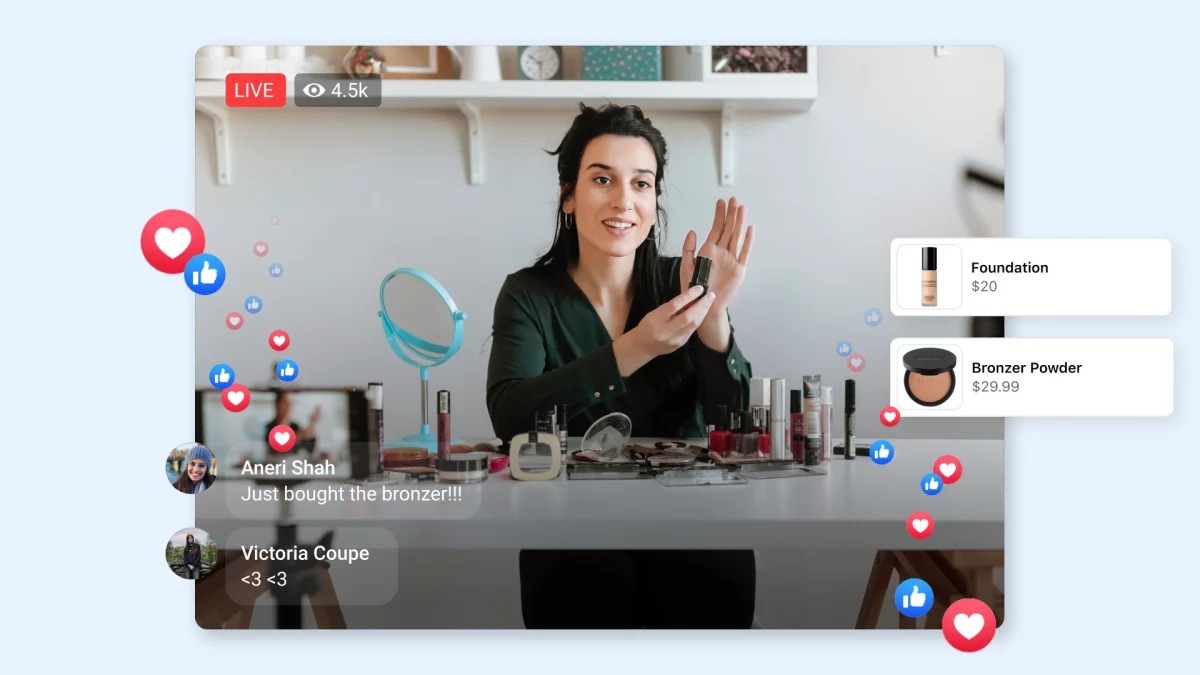
Platforms like TikTok and Meta have pioneered this trend with their online Shop, where brands see direct sales spikes during live sessions. For instance, during a specific period in 2023, 48% of total orders on TikTok were attributed to influencer promotions, underscoring the platform’s power to convert viewers into buyers instantaneously.
Also Read: Best Digital Marketing Webinars and Workshops

4. Product Seeding as a Strategy for Market Entry
Product seeding—sending free products to influencers in exchange for honest reviews and opinions—is becoming an increasingly popular way for smaller e-commerce brands to gain exposure. One of the biggest advantages of influencer or product seeding is its cost-effectiveness, with the main expenses being the product and postage. Influencer marketing platforms are now offering ways to minimize the risks previously associated with this approach, making it a viable option for brands looking to break into the market.
Also Read: Top 15 Growth Marketing Strategies for 2025
5. Long-term Ambassadorships Over One-off Promotions
Long-term ambassadorships are becoming one of the most effective forms of influencer marketing because they allow brands to build deeper relationships with influencers and their audiences.
It will be one of the norms going forward: Several factors contribute to this shift, but the underlying reason is that sales take time to develop. Even influencers with highly engaged audiences may struggle to make a significant impact when working on a single sponsored post alone.
Benefits include:
- More Authentic and Engaging Content: Influencers have more time to get to know the brand and its values.
- Deeper Relationships: This leads to more trust and collaboration, resulting in better content and campaigns.
- Increased Brand Loyalty: Consistent promotion over time helps build brand loyalty among audiences, leading to more sales and conversions.
Consider a long-term partnership if you are considering working with an influencer in 2025. It’s an investment that will pay off in the long run.
Must Find Out 5 Important Pillars of Social Media Marketing
6. Specialization and Professionalization of Influencers
In 2025, influencers are expected to become increasingly specialized in their niche or industry and present themselves as experts. This increased expertise will make them more sought after by brands, which are also turning to specialization for increased impact and thus more conversions.
Consumers are becoming more sophisticated and demanding, looking for authentic influencers who can provide valuable information and insights about their niche interests. Therefore, brands are realizing they can get better results by partnering with influencers who have a deep understanding of their target audience.
ALSO READ | Top 10 Social Media Marketing Tips to Grow Your Business.
7. Diversification of Objectives and Full-Funnel Influencer Marketing
Needless to say, There will be a shift of priorities and the understanding of influencer marketing as a valuable touchpoint across the full user experience.
Influencer marketing is evolving from a primarily awareness-generating tool to a crucial part of the full sales funnel, including conversion and customer loyalty. This strategic shift means brands will increasingly leverage influencers for top-of-funnel activities and for driving tangible business outcomes.
An example of this is Peter Thomas Roth’s strategy to sell directly on TikTok, effectively linking influencer marketing efforts to immediate sales recognition. Such approaches underscore the utility of influencer marketing as a multifaceted sales lever, not merely a visibility booster.
Also, You Should Know the Top 7 Reasons Why You Should Learn Digital Marketing in 2025
8. Multi-Channel Influencer Marketing
Multi-channel marketing involves using multiple channels to reach and engage your target audience, including social media, email, paid advertising, and more. By partnering with influencers on various platforms, you can increase visibility and engagement.
This strategy is not limited to social media alone; it extends to email campaigns, influencer-owned websites or blogs, and even collaborations that bridge the gap between digital and physical spaces.
The versatility of multi-channel marketing allows brands to establish a consistent and compelling presence across diverse touchpoints, reinforcing their message and fostering deeper connections with their audience.
Also Know About Paid Advertising Vs Content Marketing: A Detailed Comparison
9. AI’s Growing Impact
Artificial Intelligence (AI) is setting the stage for transformative changes in influencer marketing. By 2025, AI will streamline the once-intensive processes of influencer discovery and vetting. Advanced functions such as image and video recognition, audience segmentation, and automated brand safety analyses will allow marketers to identify the most suitable influencers effortlessly. There are many platforms such as IZEA, that offer AI software and services to help brands filter & connect with influencers globally.
This technological advancement ensures brands can match with influencers who share their aesthetic and have not previously engaged with competitors, optimizing campaign alignment and effectiveness.
Also Explore AI Video Revolution: How the Internet is Forever Changed [2025]
10. Increased TikTok Growth ( Debatable )
TikTok is one of the fastest-growing social media platforms, and influencer marketing on TikTok is growing even faster. It is projected that $1.32 billion will be spent on TikTok influencer marketing in 2025, almost 10 times higher than the amount spent in 2020. Reasons for TikTok’s growth include:
- Engagement: Users spend an average of 89 minutes per day on the app.
- Diverse User Base: People of all ages and interests use the platform, making it a great place for discovering new brands and products.
- Native Advertising Channels: TikTok Spark Ads, for example, allow brands to boost their organic posts with the targetability and conversion power of an ad, making them more visible and effective.
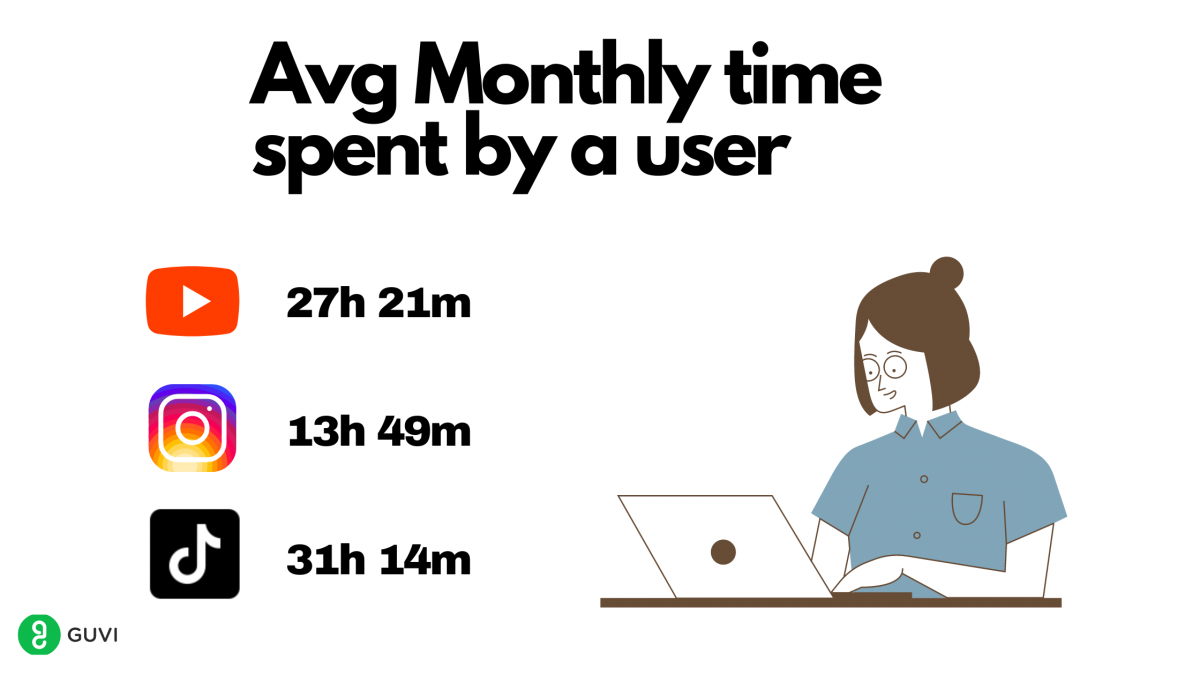
Note: TikTok was one of India’s most popular apps – until it was banned in 2020, and now, even the US is about to Ban TikTok. So Brands should tread carefully before investing.
Also Read About Data-Driven Marketing: Benefits and Challenges in 2025
11. Focus on Return on Investment Over Engagement
The influencer marketing sector is maturing, and brands are demanding more measurable results from their campaigns. This has led to a shift from vanity engagement metrics, such as likes and shares, to a bigger focus on return on investment (ROI).
This shift is facilitated by tools such as UTM tracking codes, which trace the source of website traffic generated by specific influencer content, and individual discount codes, which attribute sales directly to an influencer’s promotion.
As a result, there is a greater emphasis on performance-based deals, where influencers are compensated based on the results of their campaigns, such as the number of sales or leads generated.
Join GUVI’s Digital Marketing Course to kickstart your journey in this exciting field. Gain expertise in ChatGPT, WordPress, Meta Business Suite, Google Analytics, Youtube Analytics, Google Ads Manager, and more. Master essential skills in SEO, social media marketing, email marketing, content creation, and digital advertising tactics to excel in the Digital Marketing industry.
In Closing- Brands and Influencers must continue to evolve.
By the looks of it, Influencer marketing is not going anywhere. In the fast-paced world of influencer marketing, staying relevant and effective requires not just adaptability but also foresight. As we look ahead to 2025, the landscape of influencer marketing is not just expanding—it’s evolving with sophistication and strategic depth.
Brands and influencers alike are moving towards more meaningful, measurable engagements that not only highlight creative content but also underscore the importance of genuine relationships and data-driven results. This shift towards long-term partnerships, specialized influence, and multichannel presence reflects a maturing market where quality often trumps quantity.
The future is not just about reaching audiences—it’s about connecting with them.
Must Know About Top Digital Marketing Trends for 2025
FAQs
Influencer marketing trends in 2025 will compel brands to refine their strategies to focus on deeper, more sustained relationships with influencers. Brands will need to leverage multi-channel marketing and specialize their campaigns to target more segmented audiences effectively.
Additionally, there will be a stronger emphasis on ROI, pushing brands to adopt performance-based influencer collaborations that link compensation to clear, measurable outcomes.
Long-term influencer partnerships offer several advantages over one-off promotions. These include building stronger, more trusting relationships with influencers, which often result in more authentic and impactful content.
Continuous collaborations allow influencers to understand better and align with the brand’s values, leading to more cohesive and effective messaging.
Long-term partnerships also help in establishing brand loyalty among the influencer’s audience, potentially leading to higher conversion rates.
Multi-channel marketing expands the reach and effectiveness of influencer campaigns by engaging audiences across different platforms and mediums.
This approach allows brands to leverage the unique strengths of each channel, whether it’s the visual impact of Instagram, the storytelling prowess of YouTube, or the immediacy of Twitter.
Employing a multi-channel strategy also helps reinforce the campaign message, creating multiple touchpoints for engagement, and increasing the opportunities for audience conversion. By diversifying their presence, brands can optimize their reach and resonance in the digital ecosystem.





















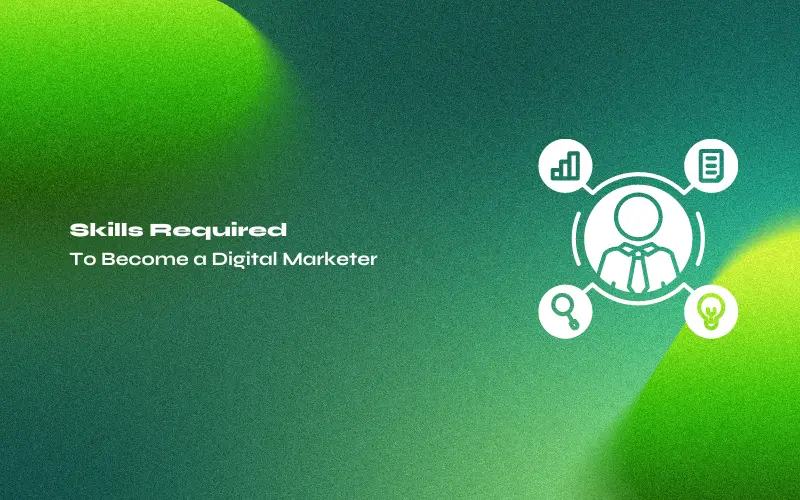


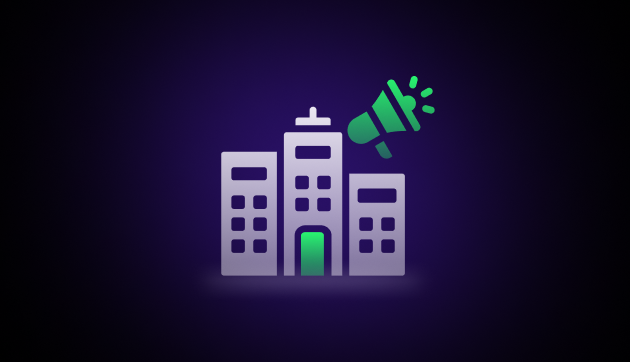
![Best Digital Marketing Courses [Free + Paid] 9 Best Digital Marketing Courses](https://www.guvi.in/blog/wp-content/uploads/2023/09/Best-Digital-Marketing-Courses.png)




Did you enjoy this article?